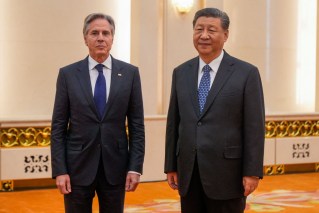The federal government’s JobMaker subsidy has come under fire over fears it will encourage unscrupulous companies to sack experienced workers in favour of publicly funded younger ones.
“There are many flaws in it that haven’t been thought through,” Australian Council of Trade Unions president Michele O’Neil said.
A centrepiece of Treasurer Josh Frydenberg’s 2020 budget was the JobMaker hiring credit, which will offer up to $200 a week for businesses to hire workers under the age of 30 who are currently on JobSeeker, Youth Allowance or the Parenting Payment.
Businesses hiring those aged 30 to 35 will attract a $100 subsidy, with both payments limited to 12 months.
The payments are predicated on a new employee working at least 20 hours a week, and employers “must demonstrate that they have increased their overall employment” – that is, increased the number of people they employ.

The number of new apprenticeships and traineeships is set to plunge 30 per cent over the next two years.
The treasury estimates the program will create 450,000 jobs for people under 35, but some fear it will simply “swap” young people for older people on the unemployment line.
Ms O’Neil said the ACTU was concerned by a scenario in which businesses, encouraged by the wage subsidy, sack one older worker and hire two or three young workers to replace them.
“You’ve increased overall headcount and payroll, but replaced older workers with younger ones,” she told The New Daily.
“The employer will get double the wage subsidy if they employ two workers for 20 hours a week than if it was one for 40 hours. There’s no requirement for secure jobs or full-time jobs. They could hire them for a short period and replace them with another worker.”
ACTU secretary Sally McManus said she had similar fears.
“JobMaker” will be “JobReplacer” if employers can just get rid of their existing casual workforce or cut the hours of part-time workers and replace them with unemployed ppl. who come with a wage subsidy
— Sally McManus (@sallymcmanus) October 7, 2020
Labor leader Anthony Albanese also voiced concerns about what this would do to older workers.
“If you’re over 35, the first hit is JobKeeper gets cut. The second move is JobKeeper gets removed. The third hit is that your unemployment benefits go back to $40 a day,” he told Sky News on Wednesday.
“So, you’re put back into poverty. And the last hit is that there’s no support for you. And you’re competing to get back into work against people who are receiving subsidies. So, we need to support young people. But we need to not forget those people who are aged over 35.”
"You'll be competing for the job with someone under 35 who is being subsidised to work"
Labor leader @AlboMP says the wage subsidy scheme for young workers announced in #Budget2020 will force older Australians into poverty. pic.twitter.com/WIluGhCzCC
— Sunrise (@sunriseon7) October 6, 2020
Ian Yates, chief executive of the Council On The Ageing, said he feared older workers would be left out in the cold.
“The two most vulnerable groups for unemployment are 18 to 24 and 55-plus. Older people can be more long-term unemployed and tend to take twice as long to get back into work as the average worker. Some never do,” he told The New Daily.
Mr Yates said COTA was “very happy” to see the subsidy for young people, but called for a similar subsidy for older Australians too, to ensure one at-risk group wasn’t disadvantaged at the cost of the other.

Employees may be encouraged to take on younger workers at the expense of older ones. Photo: AAP
“In previous crises, many older people were made redundant and never worked again. That’s a real tragedy, to be unemployed in the last decade of your working life, and still needing to pay off debts,” Mr Yates said.
“The subsidies should also be directed to people 55-plus. Let’s make it an even playing field.”
He said there was “a real danger” of employers favouring hiring new young workers over keeping older unsubsidised workers.
“We need a very clear statement from the government that makes a business say they’re not putting [a young person] on as a result of sacking someone else,” Mr Yates said.
“They should have to declare that they won’t sack someone. A lot of employers would never do it, but there are many out there who would.”
Addressing those concerns on Wednesday, Mr Frydenberg said he expected the “double-barrel test” of having to increase headcount and overall payroll would be sufficient to stop employers gaming the system.
“As of the end of September, the headcount has to be higher, and the payroll needs to be higher,” he told the National Press Club in Canberra.
“We’ve got those integrity tests in place … we believe that having that double-barrel test will ensure that we get additionally across the economy.”
Ms O’Neil said unions were also concerned at the tight pool of welfare recipients who were eligible for the hiring credit.
She claimed many women had been forced out of work and were back home to look after children following changes to childcare payments.
However, these women may be unemployed and looking for work but not on JobSeeker or parenting payments.
“They’re less likely to be on the payments, so they’re out of work but not eligible for the payment,” she said.
The Australian Unemployed Workers’ Union worried that the hiring credit would encourage short-term and insecure work, as well as holding concerns about a lack of support for workers above the age of 35.
“This will exacerbate the existing trend, with only 10 per cent of new jobs created since May this year being full-time,” the AUWU said in a statement.”









